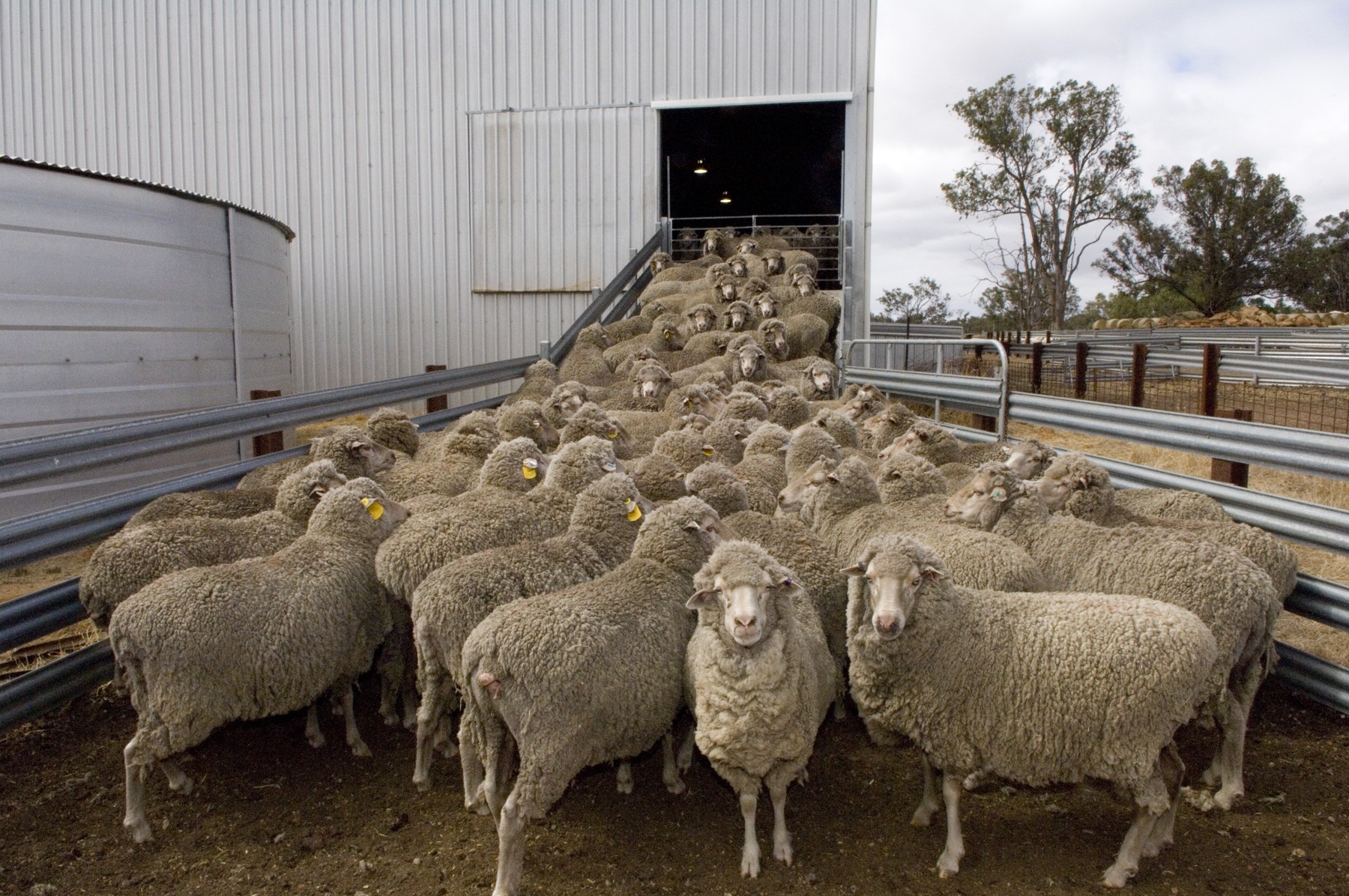
Merino sheep in full wool in race before shearing. Producers who shear in spring are being urged to monitor flocks for signs of flystrike and consider treatments to protect the welfare of sheep and flock profitability.
SHEEP producers have been reminded to monitor their flocks for signs of flystrike and to take immediate action to protect the welfare of their animals and flock profitability.
Department of Primary Industries and Regional Development veterinary officer Danny Roberts said it was important to have processes in place to manage flystrike.
Dr Roberts said the presence of the copper green Australian sheep blowfly, environmental conditions and the susceptibility of the sheep would influence the risk of flystrike.
“Ideal conditions for both body and breech strike include daytime temperatures greater than 15 degrees, enough rainfall to keep sheep moist and wind speed of less than nine kilometres per hour for three days,” he said.
“Sheep with a high level of wrinkles are most susceptible, as well as those with dags and urine stain, often as a result of scouring in response to a worm burden.
“The risk is generally unique to each paddock and each producer, as the blowflies that cause flystrike only travel within three kilometres of where they hatch.”
Flystrike symptoms include sheep that are on their own, possibly not grazing; dark stains on the wool, particularly the shoulders, back or crutch; tail twitching, rubbing or checking the affected part; and an offensive odour.
Dr Roberts said if conditions were conducive to flystrike growers would be wise to monitor their flock daily so they could take prompt, appropriate action to protect their animals, as well as flock profitability.
“Crutching is an effective means of reducing the risk of fly strike, which producers typically do themselves or source local contractors to do so,” he said.
“A pre-shearing crutch provides up to six weeks protection from breed strike but is reduced to three weeks, if sheep are scouring.”
Preventing flystrike is more economical that treating it, with a range of effective preventative treatment options are available.
The department’s free Flystrike Assist app is a valuable tool to help producers manage strict chemical withholding periods.
A paper-based Flystrike Chemical Planner, similar to the app, is also available on request from department offices.
The FlyBoss website also has a number of tools to assist wool producers to treat individual sheep or the whole flock, identify products and estimate wool residues, as well as decision support tools and management plans.
Breeding for resistance to breech strike provides the best long term, permanent solution to avoiding flystrike.
The department has contributed extensively to national research to breed sheep with higher flystrike resistance, which has been harnessed on the Sheep Genetics website.
For more information about managing flystrike in sheep visit the department’s website agric.wa.gov.au and search for ‘flystrike’.
Source: WA DPIRD

HAVE YOUR SAY